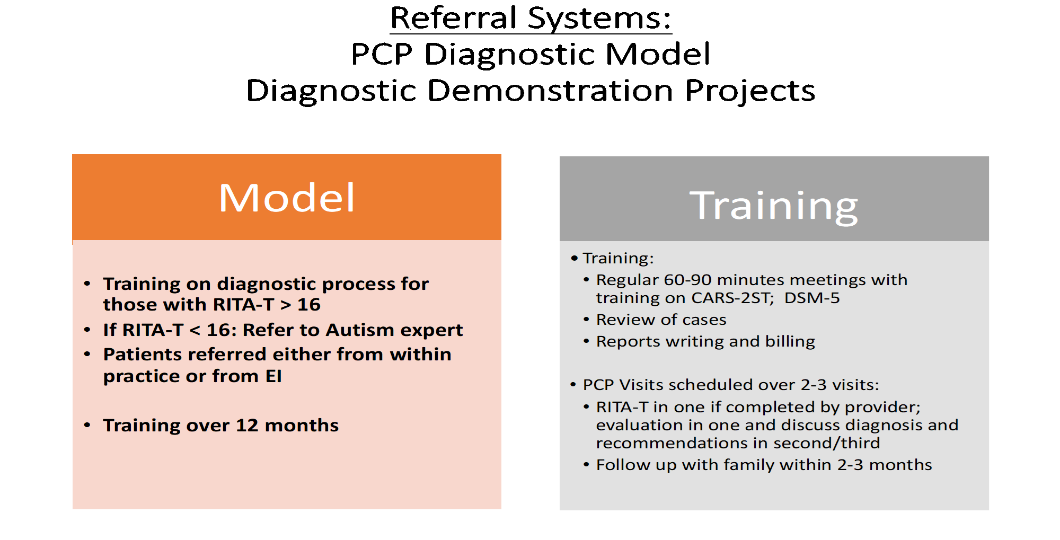Setting up the RITA-T in Clinic - Pediatric Practices:
- Specific clinicians (pediatrician, and/or NP) are trained on the RITA-T in practice.
- When other pediatricians in the practice have a child they are concerned about, they refer to the trained clinician. They also start a conversation with the family and make sure the family is already connected with EI services.
- The Clinician trained on RITA-T then schedules an appointment as a preventative visit/screening visit, and completes the RITA-T and write up.
- They then refer for an evaluation using the RITA-T intake form to specify for the diagnosing provider that the child has been screened by the RITA-T. If trained Residents in their community clinics are seeing someone with concerns, they then complete MCHAT and RITA-T in a separate visit.
- Residents start a conversation with the family, and make sure the child is receiving EI services.
- If results are in the risk range, and if the resident is concerned, they complete a referral to a diagnostician using the RITA-T intake form.
Setting up the RITA-T in Early Intervention
- Groups of providers are trained specifically on the RITA-T. Usually providers in an Autism subgroup within EI program.
- When providers are working with a child and they have concerns for ASD, if they are not trained to administer the RITA-T, they refer to trained providers to complete the administration.
- Providers start a conversation with the family while referring to a diagnostic clinic. At CARD, we will develop clinics that receive such referrals in a timely manner
Primary Care Training for ASD diagnosis using the RITA-T as triage:
- We are working with primary care groups on the integration of the RITA-T not only for screening, but for diagnosis of young children with high-risk scores on the RITA-T
- Such trainings are over 1 year

Level 1 Screening:
- If the toddler is younger than 18 months, you can use the CSBSDP-IT
- If the toddler is older than 18 months, you can use the MCHAT-R/F
History and Observation Tool to Facilitate Evaluation of Children with Suspected ASD:
We have put together this form to facilitate the evaluation of children with suspected ASD. We use this in addition to a level-1 screen and the RITA-T to develop a clinical impression.
